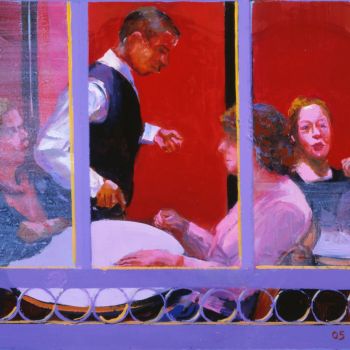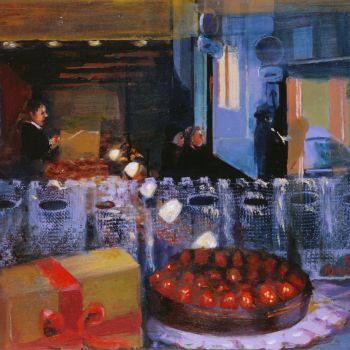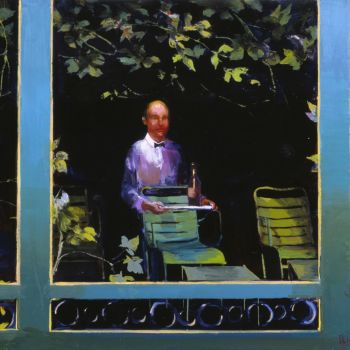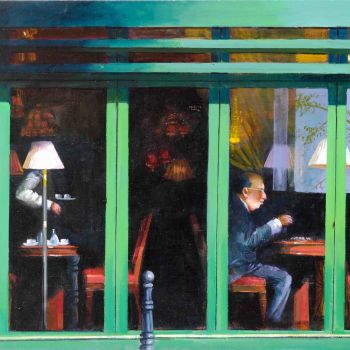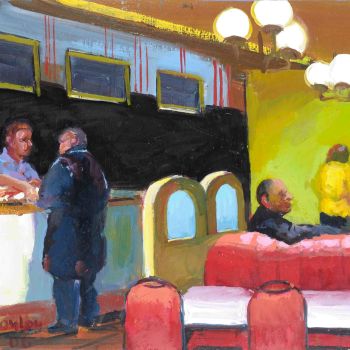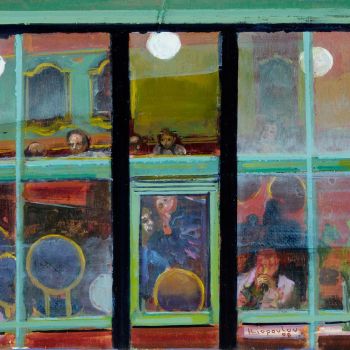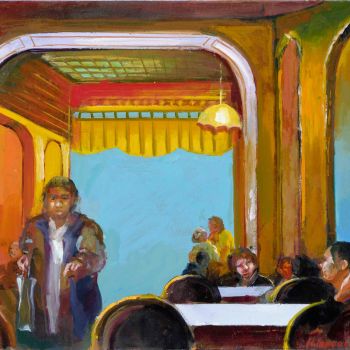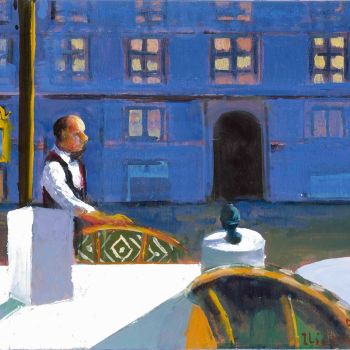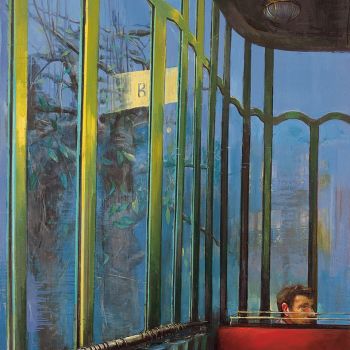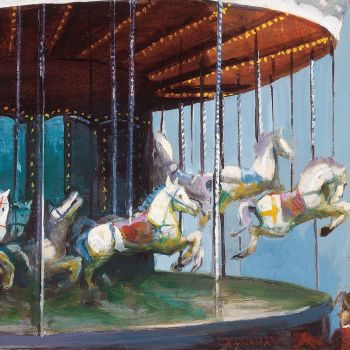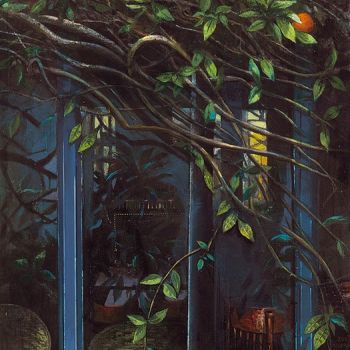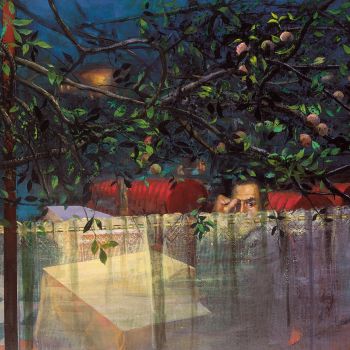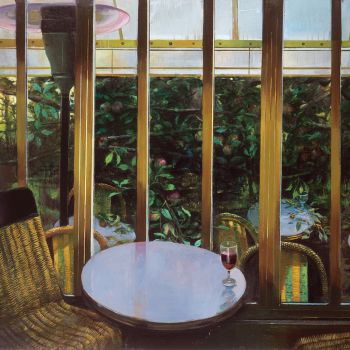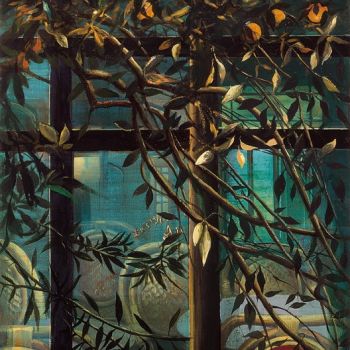We experience the first theory of art, which does not include any powerful critique on the form. Until the late Modernist period, what was obvious is that critics and critiques didn‘t care about anything else than the form. Since then, we are bothered by anything else, but we are completely reluctant to make references to issues related to the form.
We seem so afraid of the possibility to talk about the way an artwork is created, that we often face the following phenomenon: Art Theoreticians discuss with each other –in lectures, seminars, round tables, various fora etc. They start analysing the current international political context and they focus on matters of significant geopolitical importance and seeming to represent the most significant geopolitical conflicts. They continue by mentioning the existence of artworks which, one way or another, refer clearly to these conflicts, which are deemed as being the most interesting ones for a certain period of time. This paradox -i.e. the fact that an artwork is deemed interesting just because the matter to which is referred is also qualified as interesting- is, first and foremost, a result of the total absence of a powerful critique on the form of this artwork.
In that sense, the way some theoreticians approach the contemporary artistic production is not surprising. One could easily think that the essence tendency lies in the word contemporary itself. I often hear that an artist is interesting because his work is contemporary, or that the other artist is the voice of the most contemporary things one can see in painting, or that a third artist has managed to find a contemporary way to paint or to use the Art of painting. What we really mean when we recur to phrases and expressions like that is the fact that the artists about whom we are talking have invented a brand new discourse in painting, where the Art of painting has no importance at all. These artists have given us the possibility to evaluate a painting without having to evaluate the way this work is actually painted.
The arguments in favour of this tendency are most often complex and well construed and they mainly include observations which are, indeed, quite useful. One of these arguments is, for example, the need of Art to reflect aspects of collective life, using procedures which do not exclusively belong to the artistic practice and are procedures Art has in common with other areas of interest or occupations. Another similar argument is the famous inability of Art to defend its purity, the death of Greenbergian orthodoxy, fighting for ages between life and death, just like Mercutio in the respective ballet work by Prokofiev.
However, the main and real reason for the absence of critique on the form are the needs of the market or, the establishment of a system guaranteeing the constant supplying of the product explosion experienced in the art market (as well as by every market) after WWII.
It is often written -and I have to confess I am also guilty on that point- that themain characteristic of the contemporary artistic landscape is pluralism. It is eventually interesting to observe that, when talking about pluralism, in reality, we rather talk about a pluralism of means or,even more specifically, a pluralism of materials. This characteristic is uncontestable. Of course, one could surely say that certain materials are more contemporary than others, in the sense that they are more recent than others. However, the issue of the contemporary use of a certain material (as opposed to an older and, often obsolete, use thereof) is something completely different. Nevertheless, such an argument could be very hardly defendable, at least as regards contemporary Art. But could we ever say that the way Delacroix used paint is really old-fashioned compared to the way Manet used paint?
There is no contemporary painting. There is painting which is inspired by, takes into account or represents contemporary life, as it always did, -of course-, since it never had any other choice. This obsession with everything contemporary is clearly a convention of our times and taking it into account is completely optional. However, only another kind of convention would be likely to constitute an act of promotion of a sane, healthy pluralism. This convention wouldn‘t have anything to do with what‘s contemporary, but rather with what‘s solidly based in collective sensibility, so that its renewal would stem from its application in depth
The question why in a state such as the Modern Greek State (which was stigmatised from the very beginning by these two constant anxieties- its connection with the ancient past and its equal contribution to the modern world) none has managed so far to take advantage of the unique opportunity offered by the so-called generation of the Modern Greek Representative Artists. They were the artists most likely to establish this new convention, based solely on their faith in one single material.
The Art of Irini Iliopoulou is definitely such. There is no way of letting you ignore her „kitchen“. I believe – and I really feel it as I am writing- that even one more word should be considered as pointless, empty talk.
However, I would like to remind George Braques‘ beautiful aphorism: „Art is a way of representing things“, in order to say the following: representation and depiction are not at all the same thing. A representation is a creation of a whole new order, a new system. It is the creation of a new fact. And in painting, this is achieved through the mixing of colours, which are organised on a surface, in order to make a word readable. The more successfully organised the colours, the better a painting. It sounds really simple, but it is not. For what makes this organisation more or less successful remains always a mystery. In our discussions with Irini, we managed to approach it, concluding that some more black paint should be used on one point, a strong reflection on another one, which should be less intense, a bright purple nuance which was much more functional than expected and so on...
Possibly, the most brilliant thing I could write about Irini Iliopoulou´s Art is the fact that it is attractive just because it is perfectly aware of the forms. And if I had to find another way to express the exact same thing, I would say that her artworks are attractive just because they really are paintings.
Avgoustinos Zenakos


